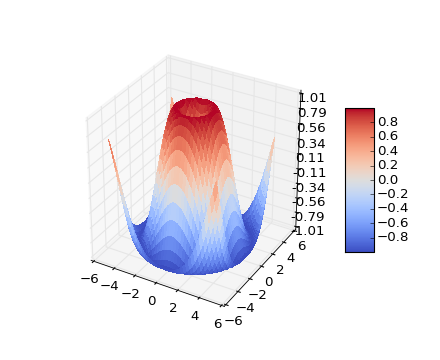Matplotlib
Plotting in Python
Yann Tambouret
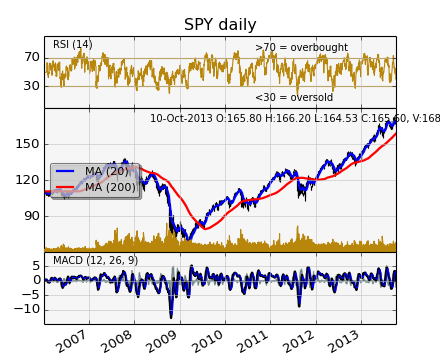
- You can plot interactively
- You can plot programmatically (ie use a script)
- You can embed in a GUI
iPython
- A better interactive python
- ipython --pylab
- Manipulate your data and plot it too!
pylab is a mixture of matplotlib and numpy
For ipython, --pylab is a short cut for
from pylab import * ion()
pylab is same as many from FooBar import *, e.g.:
# ... from matplotlib.pyplot import * # ... from numpy import * from numpy.fft import * # ...
Why?
>>> #from pylab import *; ion() >>> x = arange(0, 10, 0.2) >>> y = sin(x) >>> plot(x, y) [<matplotlib.lines.Line2D object at 0x28fb690>] >>> savefig('sinexample.png')
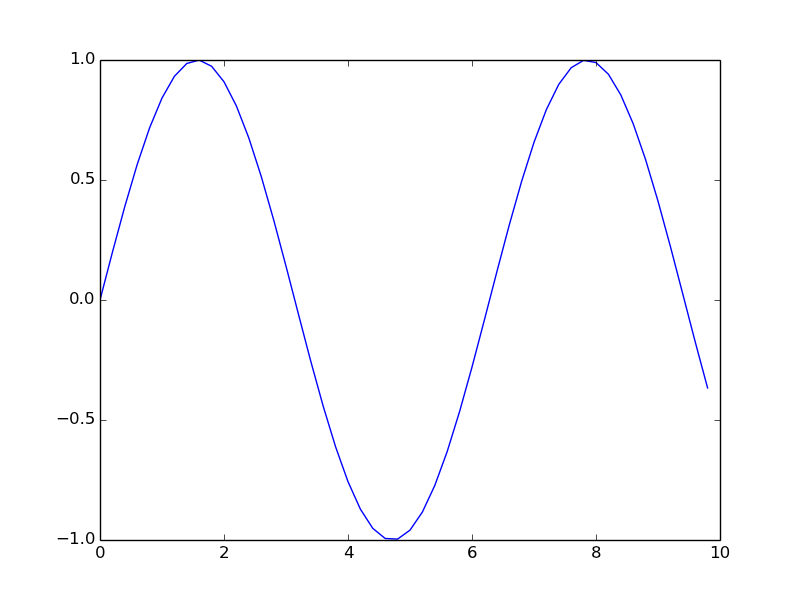
plot
- plot x vs. y
- x is optional, defaults to arange(len(y))
- full control over line, marker style, color
- multiple calls means multiple lines on same plot
>>> figure() <matplotlib.figure.Figure object at 0x1766250> >>> p1, = plot(theory_x, theory_y, label='theory') >>> p2, = plot(exp1x, exp1, 'ro', label='experiment 1') >>> p3, = plot(exp2x, exp2, marker='*', label='experiment 2') >>> savefig('threeplots.png')
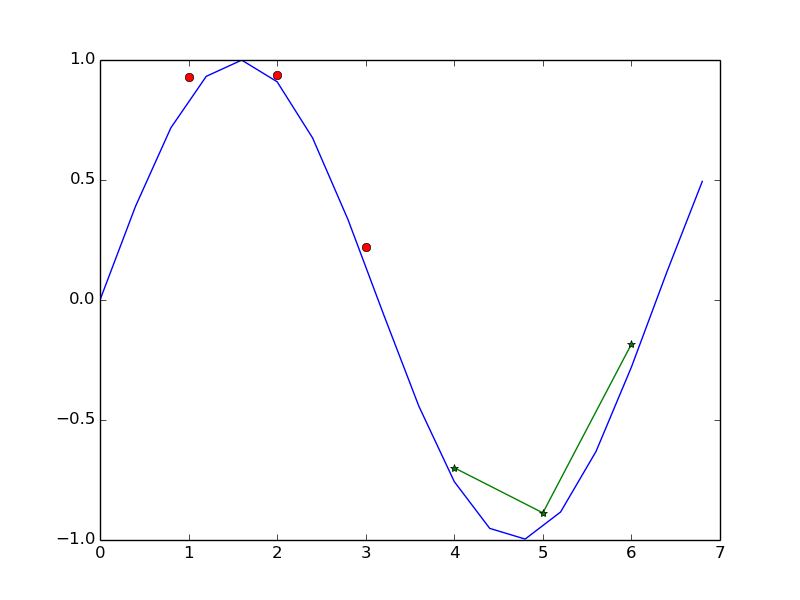
- control look using 2 character encoding (color, symbol)
plot(exp1x, exp1, 'ro', label='experiment 1') # 'ro' is red circle
- marker, dash and color also do the same thing
- label is useless until a Legend is created.
>>> legend() <matplotlib.legend.Legend object at 0x2ba7410> >>> # same as: >>> #legend((p1, p2, p3), ('theory', 'experiment 1', 'experiment 2')) >>> savefig('three_and_legend.png')
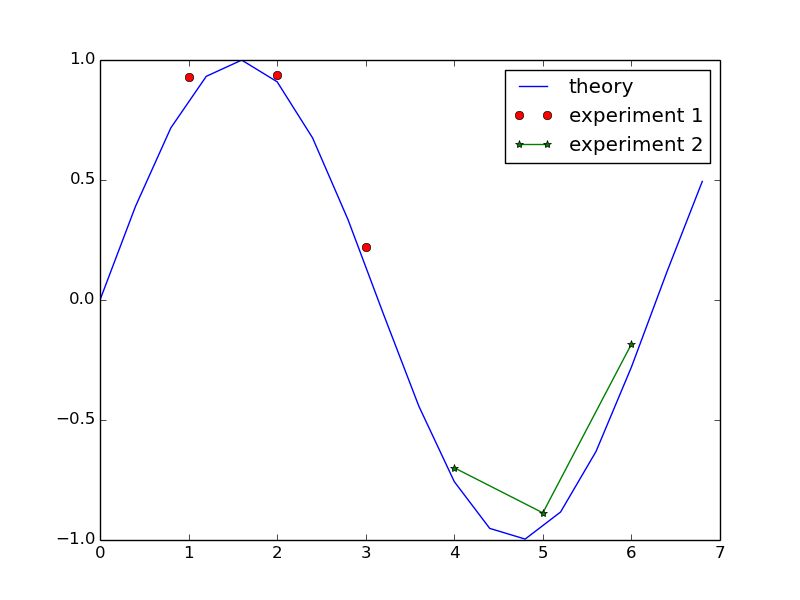
show or save
show() generates a new window showing the results
not needed with ipython
savefig(<options>) saves the current figure
figure() makes a new figure, it's like a reset.
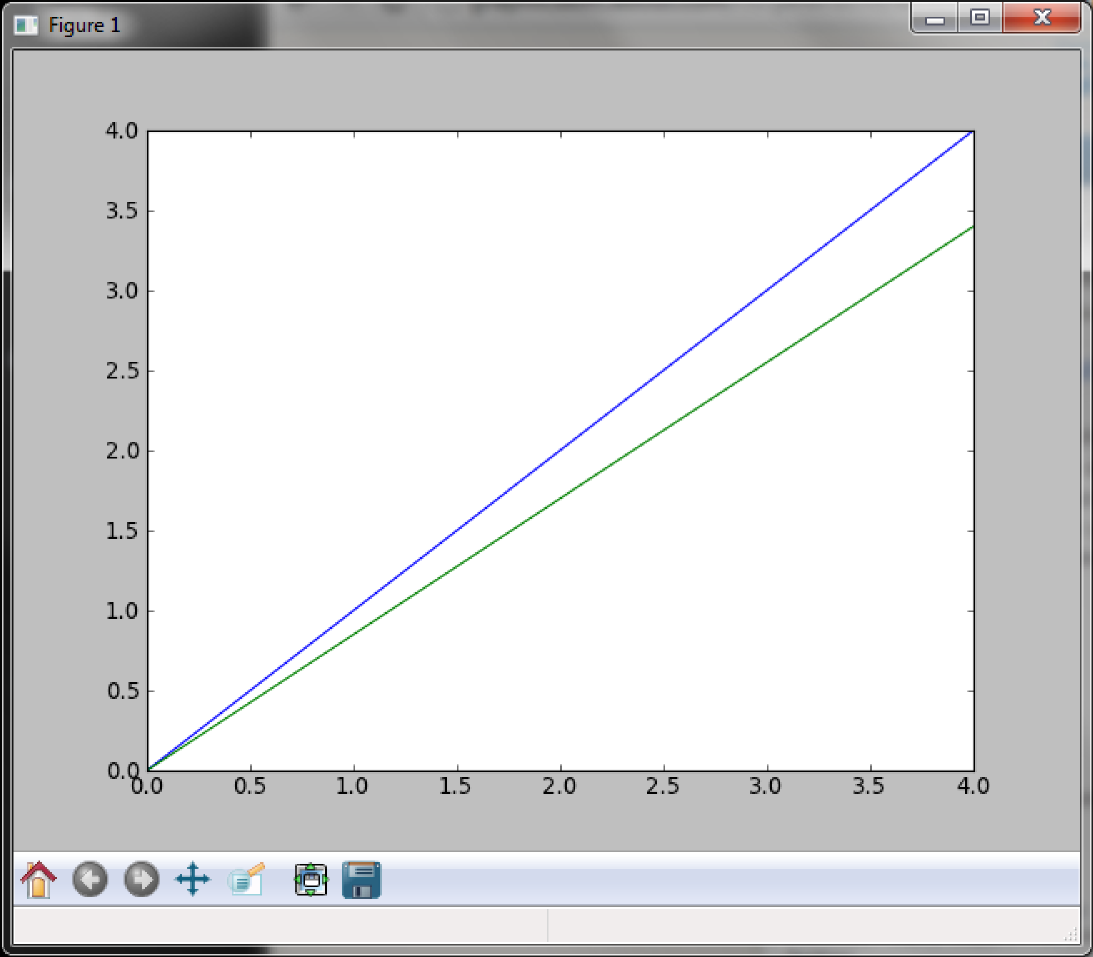
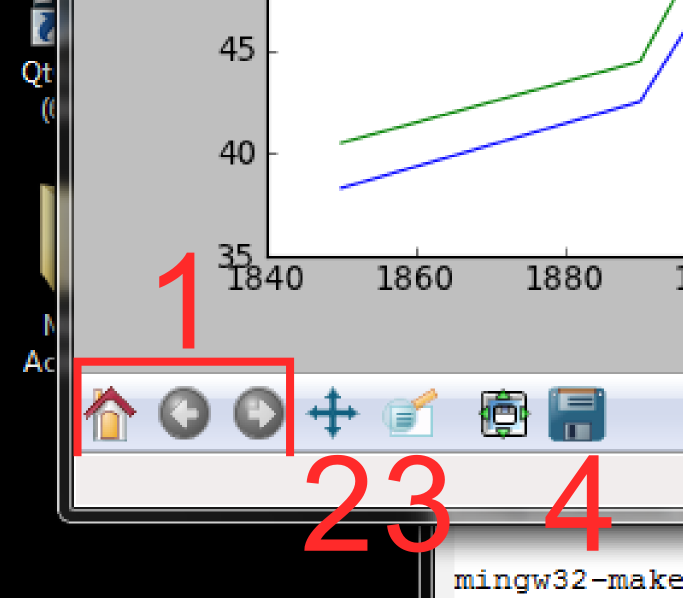
Problem 1
cd practice
from problem1 import x1, y1, x2, y2
# step 1 # x1, y1 represent the "theory" # plot these as a red, dashed line # You can find how to control the line style here: # http://matplotlib.org/api/pyplot_api.html?highlight=pyplot.plot#matplotlib.pyplot.plot # label the line 'Theory'plot documentation
# step 2 # x2, y2 represent the "experiment" # plot these as green, upside down triangles # label the line 'Experiment'plot documentation
# step 3 # create a legend in the lower left corner # make it 50% transparent, see fig_1() function of # http://matplotlib.org/examples/pylab_examples/legend_auto.htmllegend example
and
legend guide# step 4 # save the figure as 'solution1.png # show the figure

xticks
>>> help(xticks) Help on function xticks in module matplotlib.pyplot: xticks(*args, **kwargs) Get or set the *x*-limits of the current tick locations and labels. :: # return locs, labels where locs is an array of tick locations and # labels is an array of tick labels. locs, labels = xticks() # set the locations of the xticks xticks( arange(6) ) # set the locations and labels of the xticks xticks( arange(5), ('Tom', 'Dick', 'Harry', 'Sally', 'Sue') ) The keyword args, if any, are :class:`~matplotlib.text.Text` properties. For example, to rotate long labels:: xticks( arange(12), calendar.month_name[1:13], rotation=17 )
>>> figure() <matplotlib.figure.Figure object at 0x312a590> >>> x = linspace(1,10, 100) >>> y = 10*np.exp(-(x-5)**2) >>> lines = plot(x, y) >>> savefig('ticks_labels0.png')
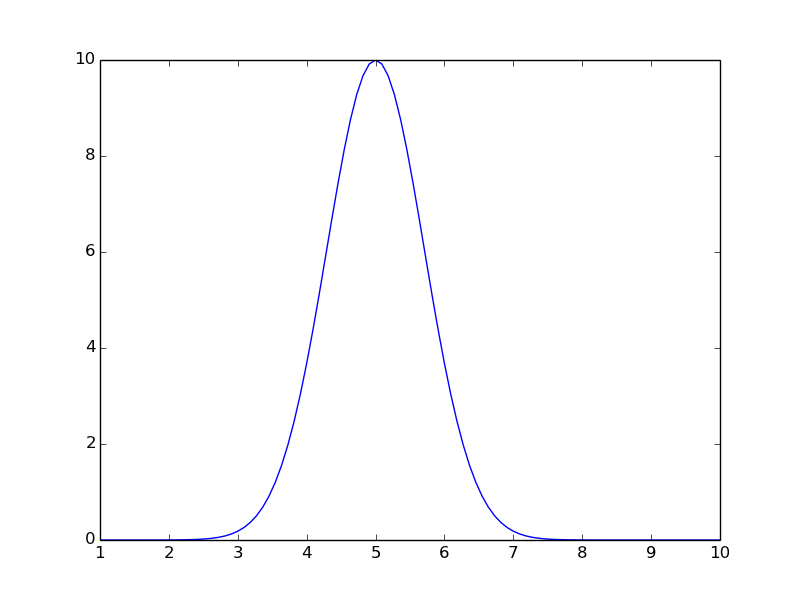
x(y)ticks controls tick marks
>>> xticks((1, 5, 9), ('start', 'middle', 'end'), ... rotation=25) ([<matplotlib.axis.XTick object at 0x311e150>, <matplotlib.axis.XTick object at 0x28dd590>, <matplotlib.axis.XTick object at 0x31e89d0>], <a list of 3 Text xticklabel objects>) >>> yticks(arange(1,14, 3)) ([<matplotlib.axis.YTick object at 0x3100210>, <matplotlib.axis.YTick object at 0x31bc4d0>, <matplotlib.axis.YTick object at 0x31f2ad0>, <matplotlib.axis.YTick object at 0x31eed10>, <matplotlib.axis.YTick object at 0x3524310>], <a list of 5 Text yticklabel objects>) >>> savefig('ticks_labels1.png')
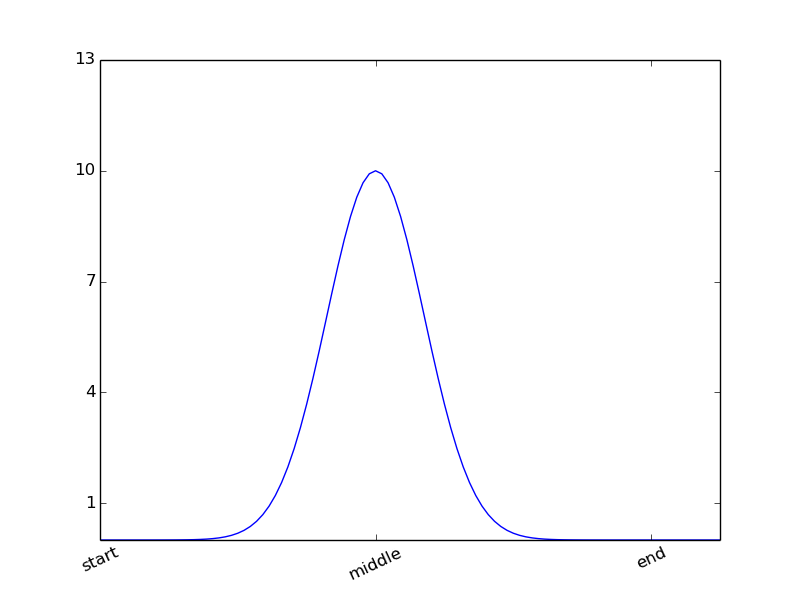
x(y)label controls axis title
x(y)lim controls the data range
title produces a axes title
>>> xlabel('story line') <matplotlib.text.Text object at 0x3117dd0> >>> ylabel('value') <matplotlib.text.Text object at 0x31007d0> >>> ylim(-1, 15) (-1, 15) >>> title('A story in a curve') <matplotlib.text.Text object at 0x31d9790> >>> savefig('ticks_labels2.png')
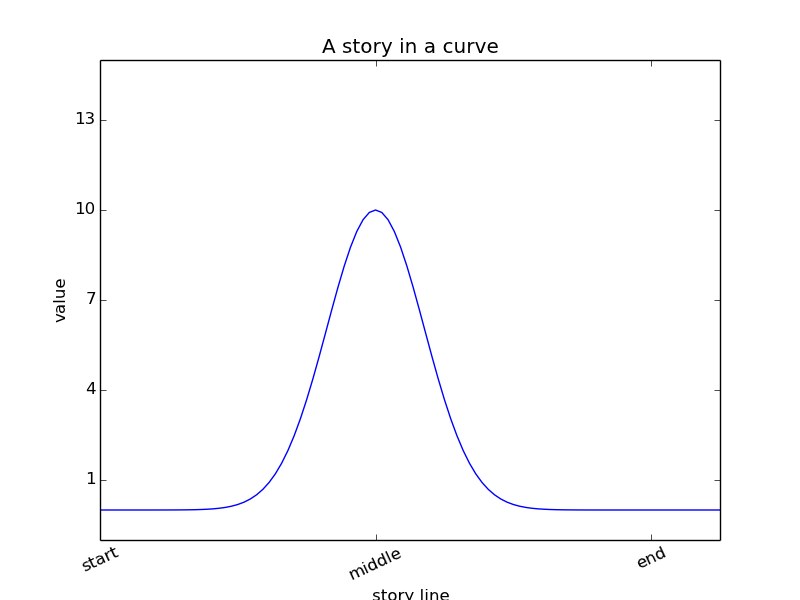
>>> tight_layout() >>> savefig('ticks_labels3.png')
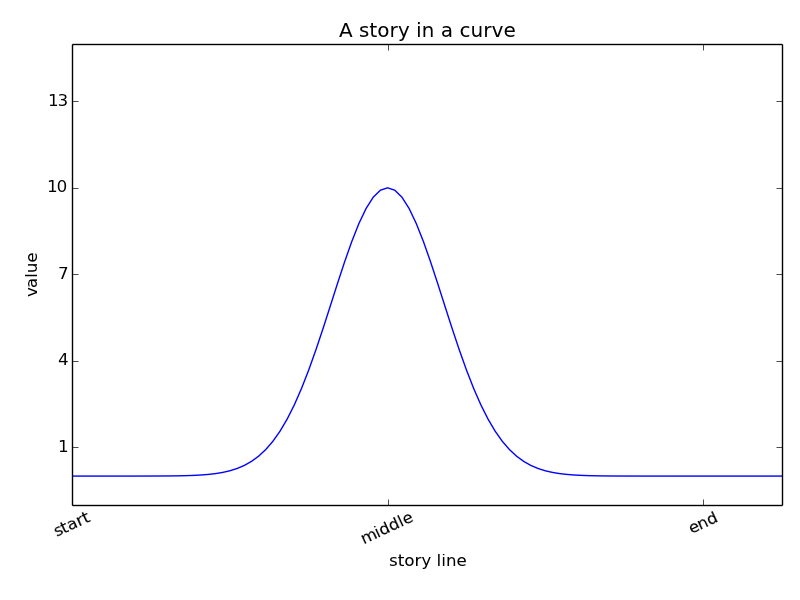
annotate -- label + arrow
>>> annotate('starts\nto get ugly', ... xy=(6, 6.6), ... xytext=(7, 8), ... arrowprops=dict(facecolor='black')) <matplotlib.text.Annotation object at 0x353de90> >>> savefig('annotations1.png')
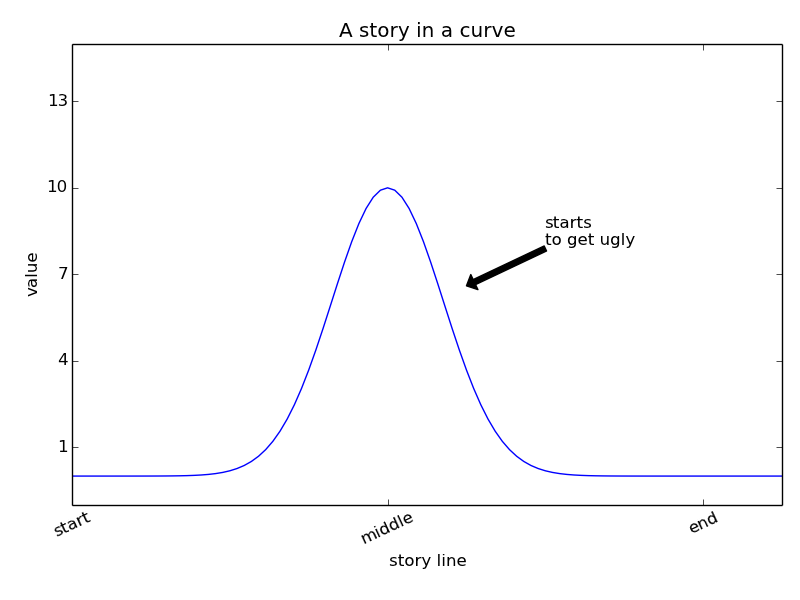
text -- just a label... latex is accepted
>>> text(3.5, 10.5, '$10*e^{-(x-5)^{2}}$') <matplotlib.text.Text object at 0x3549c10> >>> savefig('annotations2.png')
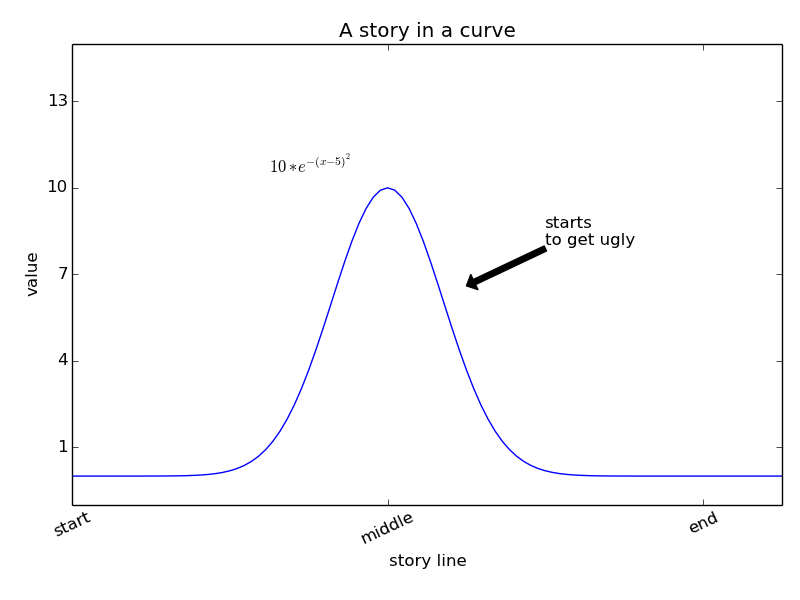
Circle is an "artist", the route of most shapes, e.g. arrows, etc.
>>> ax = gca() # get-current-axes >>> # default to "data" units, >>> circ = Circle((4, 10*exp(-1)), radius=.5, fill=False) >>> ax.add_artist(circ) <matplotlib.patches.Circle object at 0x3555050> >>> savefig('annotations3.png')
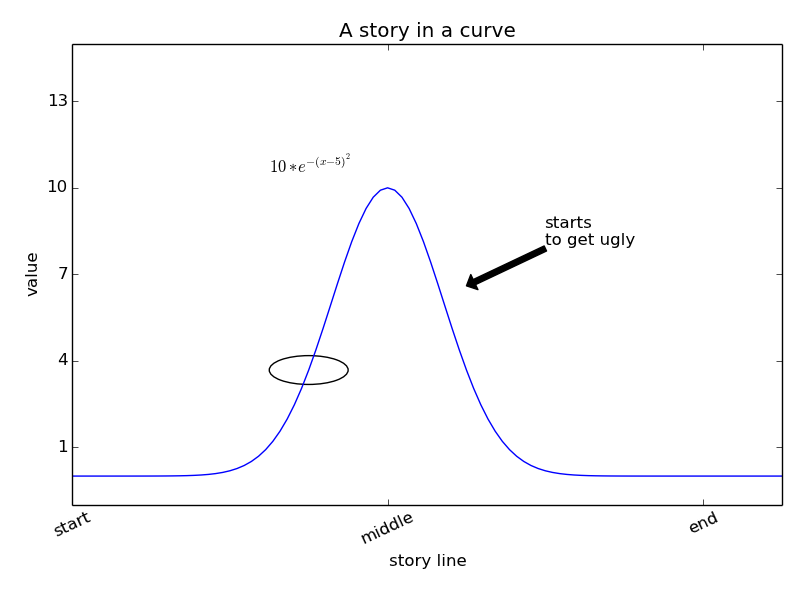
Problem 2
# step1 # annotate the point (11.75, 12.5) # and place the message "Decent fit" # at position (15, -5) # for the arrowprops keyword # create a dictionary with 2 keys: arrowstyle and connectionstyle # use an arrowtyle='->' # with connectionstyle= "angle3,angleA=180,angleB=95" # see the docs for more info: # http://matplotlib.org/api/axes_api.html?highlight=arrow#matplotlib.axes.Axes.annotate # http://matplotlib.org/api/artist_api.html?highlight=fancyarrowpatch#matplotlib.patches.FancyArrowPatch
# step2 # place the text: "Theory:\n$f(x) = 0.15x^{1.5} + 2x + 20sin(x)$" # at position (5, 60)
# step3 # make the odd xtick marks red # a. use xticks() to get both a list of positions and labels # b. if position is odd (odd_number%2 == 1), make label red using, set_color('red')
- matplotlib.org
- quick search
- "xticks"
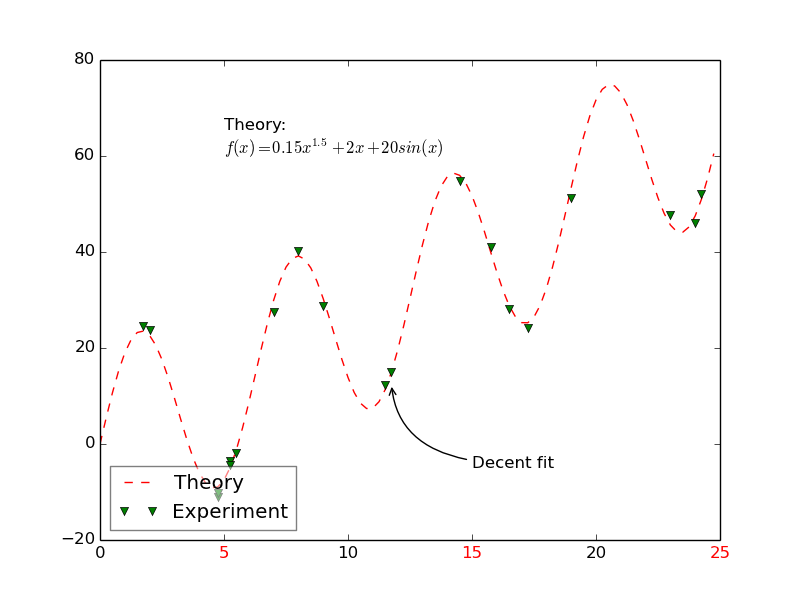
scatter is used to place a symbol at each x, y value.
>>> figure() <matplotlib.figure.Figure object at 0x3620250> >>> x = linspace(1, 10, 100) >>> y = x*3 - 4 + (random(100) - .5) * 5 >>> scatter(x, y) <matplotlib.collections.PathCollection object at 0x3b06a50> >>> savefig('scatter1.png')
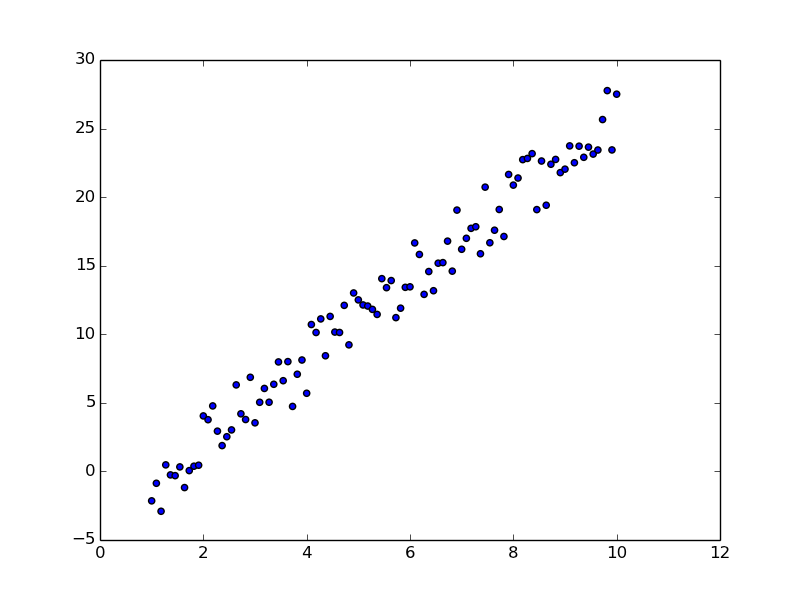
With scatter you can control size and color, to show 4D data.
>>> figure() <matplotlib.figure.Figure object at 0x3b13a90> >>> w = (random(100))**4 >>> z = (x-5)**2 >>> wrange = max(w) - min(w) >>> # in pixels**2 >>> wsize = (w-min(w))/wrange*100+5 >>> scatter(x, y, c=z, s=wsize) <matplotlib.collections.PathCollection object at 0x3eaa310> >>> savefig('scatter2.png')
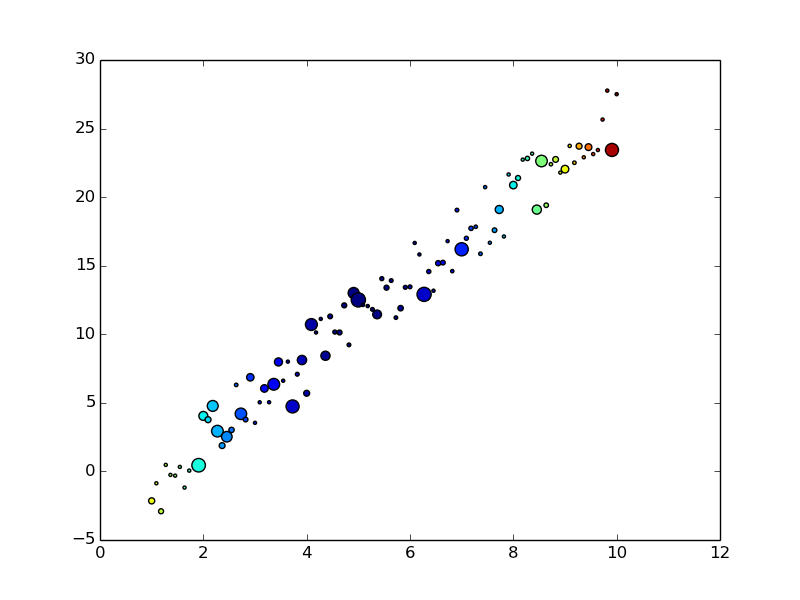
plot can be like scatter
>>> figure() <matplotlib.figure.Figure object at 0x31f2c10> >>> plot(x,y, 'ro') [<matplotlib.lines.Line2D object at 0x42682d0>] >>> scatter(x+4, y) <matplotlib.collections.PathCollection object at 0x4268950> >>> savefig('scatter3.png')
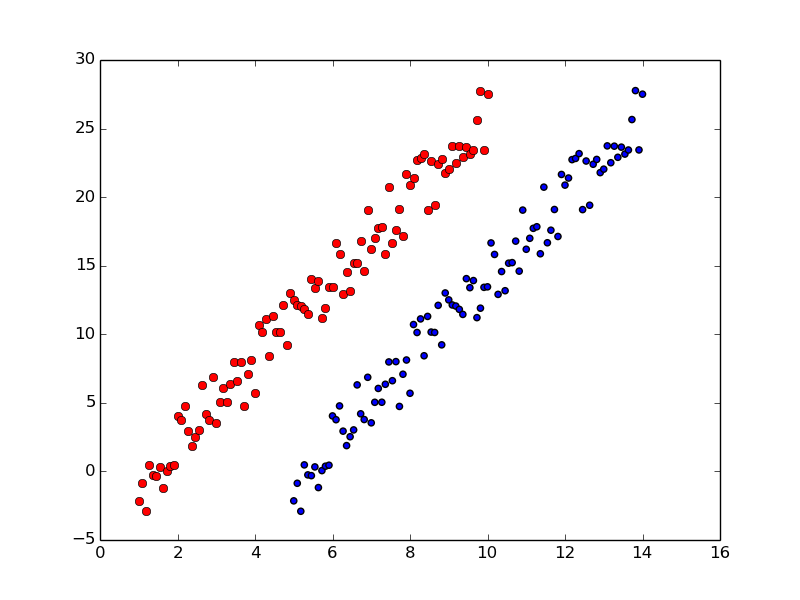
errorbar -- like plot with error bars (shocking I know)
>>> figure() <matplotlib.figure.Figure object at 0x4279f90> >>> ytheory = x*3 - 4 >>> errorbar(x, ytheory , yerr=(y-ytheory)) <Container object of 3 artists> >>> savefig('error1.png')

>>> figure() <matplotlib.figure.Figure object at 0x3524d10> >>> ytheory = x*3 - 4 >>> errorbar(x, ytheory , yerr=((y-ytheory)*4, random(100)), ) <Container object of 3 artists> >>> savefig('error2.png')

>>> import matplotlib.mlab as mlab >>> figure() <matplotlib.figure.Figure object at 0x4641e50> >>> x = y = np.arange(-3.0, 3.0, 0.025) >>> X, Y = np.meshgrid(x, y) >>> Z1 = mlab.bivariate_normal(X, Y, 1.0, 1.0, 0.0, 0.0) >>> Z2 = mlab.bivariate_normal(X, Y, 1.5, 0.5, 1, 1) >>> Z = Z2-Z1 # difference of Gaussians
imshow intended for showing images, used for showing Matricies
>>> im = plt.imshow(Z, ... interpolation='bilinear', ... cmap='RdYlGn', ... origin='lower', ... extent=[-3,3,-3,3], ... vmax=abs(Z).max(), ... vmin=-abs(Z).max()) >>> savefig('imshow1.png')
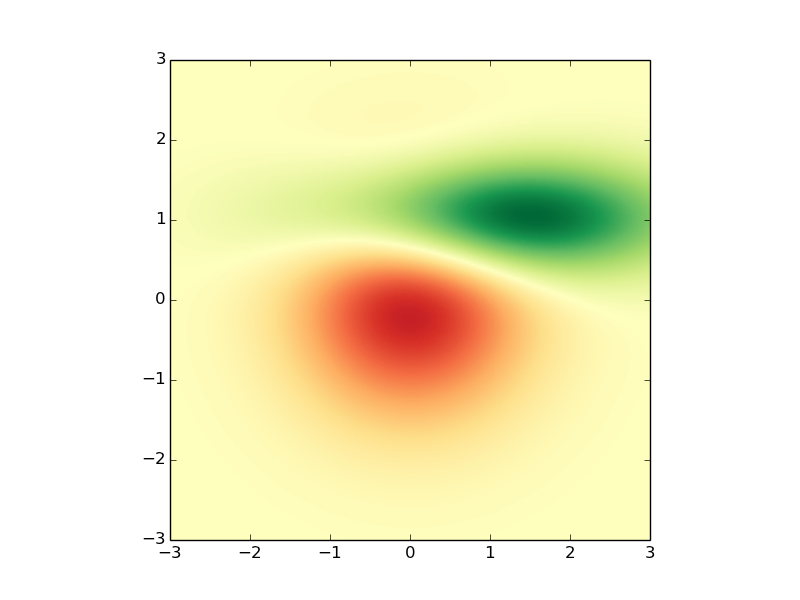
colorbar is like legend for color scales.
>>> colorbar(im) <matplotlib.colorbar.Colorbar instance at 0x52e02d8> >>> savefig('imshow2.png')
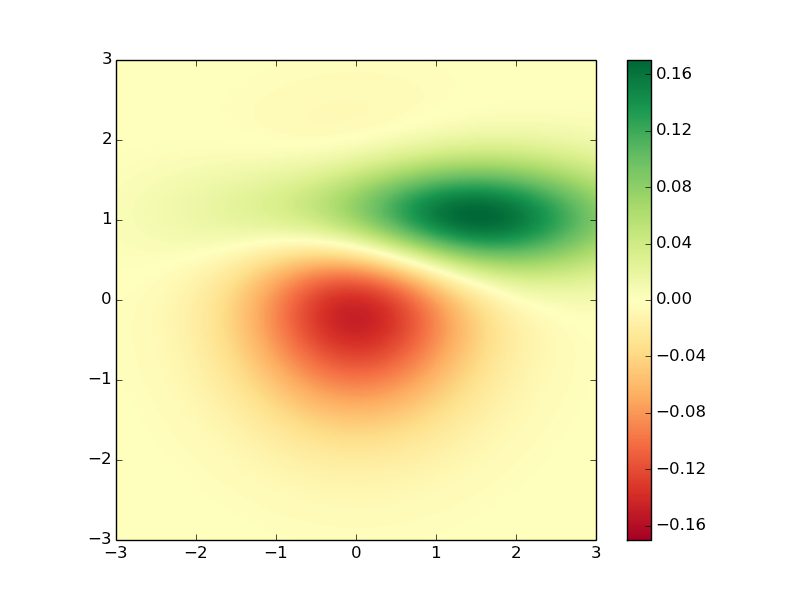
contorf is filled contours
>>> figure() <matplotlib.figure.Figure object at 0x52ebcd0> >>> cf = contourf(x, y, Z, cmap='RdYlGn') >>> colorbar(cf) <matplotlib.colorbar.Colorbar instance at 0x5a2e6c8> >>> savefig('contourf.png')
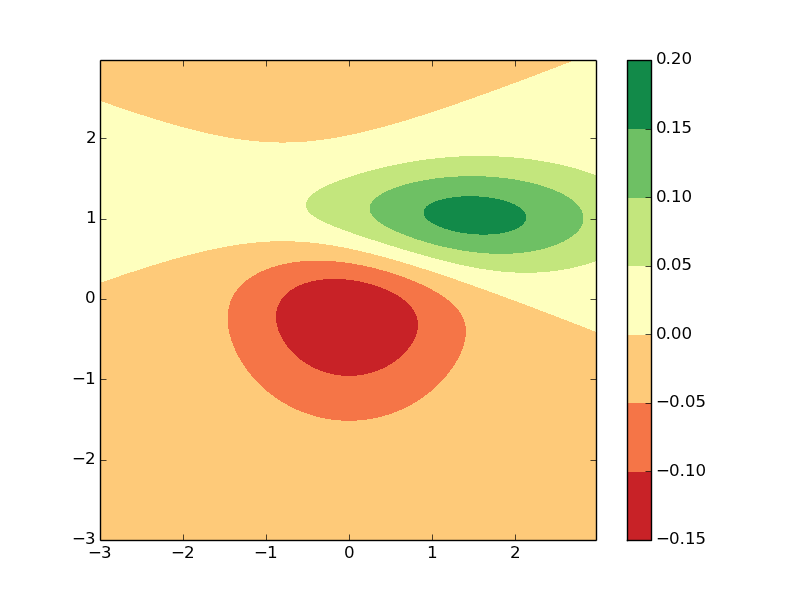
subplots are just axes organized on a grid.
figure() subplot(211) # nrows, ncols, axes_num plot((arange(20)-5)**2) xlabel('bond distance') ylabel('Potential Energy') subplot(212) scatter(random(100)*20, random(100)*100) xlabel('Response') ylabel('Force') tight_layout() savefig('subplots.png')
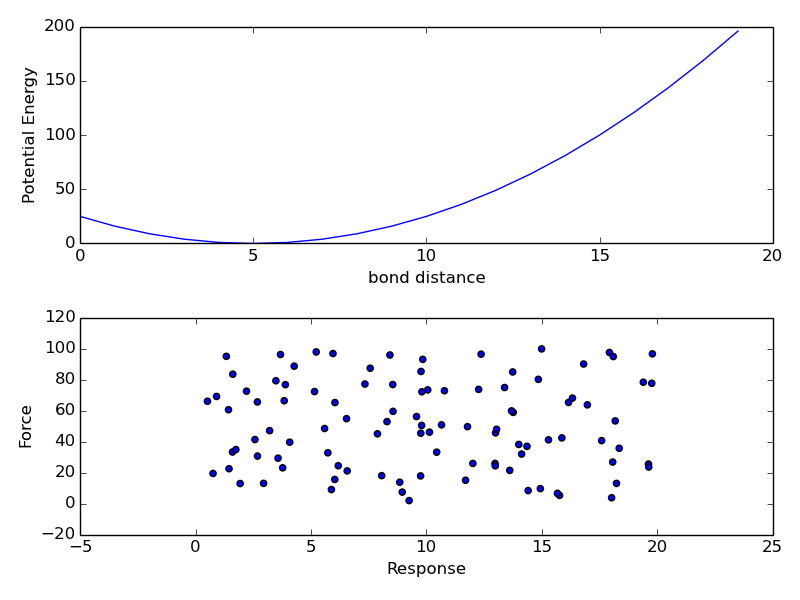
twinx, twiny make two scales on same axes
>>> figure() <matplotlib.figure.Figure object at 0x3739450> >>> line1 = plot((arange(20)-5)**2) >>> ylab1 = ylabel('Potential Energy') >>> xlab = xlabel('Bond Distance, i.e. Force') >>> twinx() # <- new axes sharing x range <matplotlib.axes.AxesSubplot object at 0x376d190> >>> scat1 = scatter(random(100)*20, random(100)*100) >>> ylab2 = ylabel('Response') >>> savefig('twinx.png')
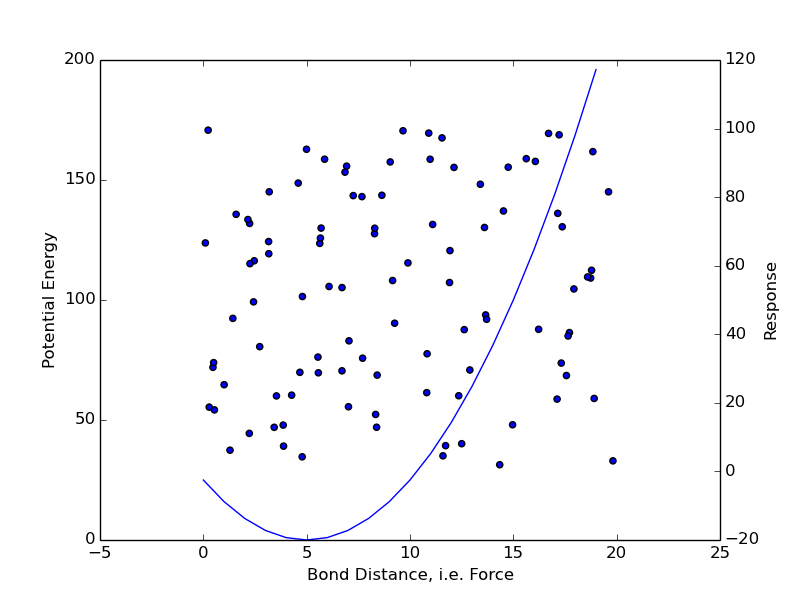
Backends
This is the code that controls 1) gui or 2) image creation.
tkagg, webagg, pdf, ps, svg, wx/wxagg, cocoaagg
Missing ones:
gtk/gtk3/gtkagg, qt4/qt4agg, cairo/gtkcairo
Not Like this:
>>> import matplotlib.pyplot as plt >>> import matplotlib >>> matplotlib.use('PS') /usr1/scv/yannpaul/scvnb/etc/apps/matplotlib/matplotlib_1.3/lib/python2.7/site-packages/matplotlib-1.3.0-py2.7-linux-x86_64.egg/matplotlib/__init__.py:1141: UserWarning: This call to matplotlib.use() has no effect because the the backend has already been chosen; matplotlib.use() must be called *before* pylab, matplotlib.pyplot, or matplotlib.backends is imported for the first time. warnings.warn(_use_error_msg)
But like this
>>> import matplotlib >>> matplotlib.use('PS') >>> import matplotlib.pyplot as plt >>> from pylab import *
Configure Defaults
- backend
- font, font size
- savefig behavior
>>> import matplotlib >>> matplotlib.rcParams['lines.linewidth'] = 2 >>> matplotlib.rcParams['lines.color'] = 'r' >>> # where is the config file? >>> # matplotlib.matplotlib_fname()
Event Handling
legend_picking.py
Try this example out:
cd mpl_examples/event_handling/legend_picking.py
python legend_picking.py
""" Enable picking on the legend to toggle the legended line on and off """ import numpy as np import matplotlib.pyplot as plt t = np.arange(0.0, 0.2, 0.1) y1 = 2*np.sin(2*np.pi*t) y2 = 4*np.sin(2*np.pi*2*t) fig, ax = plt.subplots() ax.set_title('Click on legend line to toggle line on/off') line1, = ax.plot(t, y1, lw=2, color='red', label='1 HZ') line2, = ax.plot(t, y2, lw=2, color='blue', label='2 HZ') leg = ax.legend(loc='upper left', fancybox=True, shadow=True) leg.get_frame().set_alpha(0.4)
# we will set up a dict mapping legend line to orig line, and enable # picking on the legend line lines = [line1, line2] lined = dict() for legline, origline in zip(leg.get_lines(), lines): legline.set_picker(5) # 5 pts tolerance lined[legline] = origline # blank line
def onpick(event): # on the pick event, find the orig line corresponding to the # legend proxy line, and toggle the visibility legline = event.artist origline = lined[legline] vis = not origline.get_visible() origline.set_visible(vis) # Change the alpha on the line in the legend so we can see what lines # have been toggled if vis: legline.set_alpha(1.0) else: legline.set_alpha(0.2) fig.canvas.draw() fig.canvas.mpl_connect('pick_event', onpick) plt.show()
Problem 3
# step 1 # make a routine that takes an axes # and plots the theory and experiment from # problem 1 and 2 def plot1(axes):
# step 2 # make a routine that takes a tuple (x, y) # and updates the rect position using set_xy # and updates the xlim and ylim of the second subplot using # the x, y, width, height and set_xlim and set_ylim # methods def highlight(xy): width = 5 height = 20
# write a routine that takes an event and calls # the highlight routine passing (event.xdata, event.ydata) # and then it redraws the figure. def onpick(event):
# step 4 # make two subplots # call plot_theory_exp on each axes # add the artist rect to the first axes # call highlight at position (10, 5)
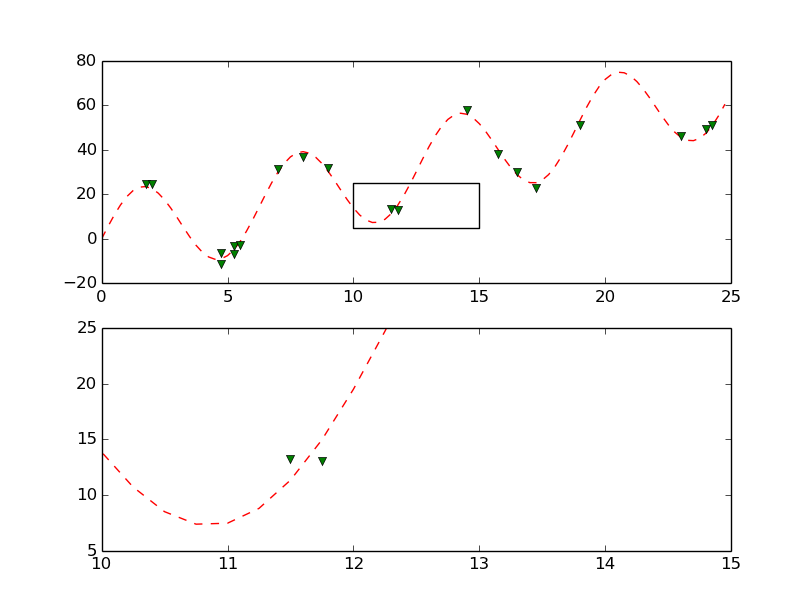
Extensions
mplot3D
mpl_examples/mplot3d/surface3d_demo.py
3D module:
from mpl_toolkits.mplot3d import Axes3D
Everything Else:
from matplotlib import cm from matplotlib.ticker import LinearLocator, FormatStrFormatter import matplotlib.pyplot as plt import numpy as np
Get Axes Ready
fig = plt.figure() ax = fig.gca(projection='3d')
Generate data
X = np.arange(-5, 5, 0.25) Y = np.arange(-5, 5, 0.25) X, Y = np.meshgrid(X, Y) R = np.sqrt(X**2 + Y**2) Z = np.sin(R)
Make a Surface
surf = ax.plot_surface(X, Y, Z, rstride=1, cstride=1, cmap=cm.coolwarm, linewidth=0, antialiased=False) ax.set_zlim(-1.01, 1.01)
ax.zaxis.set_major_locator(LinearLocator(10)) ax.zaxis.set_major_formatter(FormatStrFormatter('%.02f')) fig.colorbar(surf, shrink=0.5, aspect=5) plt.show()
